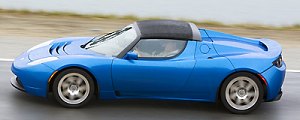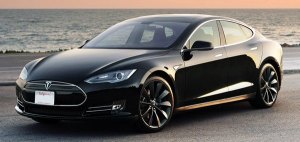
| - |
Production plant: Fremont, California, USA.

2023 delivery: 1,808,581 units (Model 3/Y: 1,739,707; Model S/X & Cybertruck: 68,874)
2022 delivery: 1,313,851 units (Model 3/Y: 1,247,146; Model S/X: 66,705)
2021 delivery: 936,172 units (Model 3/Y: 911,208; Model S/X: 24,964)
2020 delivery: 499,550 units (Model 3/Y: 442,511; Model S/X: 57,039)
2019 delivery: 367,500 units (Model 3: 300,815; Model S/X: 66,746)
2018 delivery: 245,240 units (Model 3: 145,846; Model S/X: 99,394)
2017 delivery: 101,312 units
2016 delivery: 76,230 units
2015 delivery: 50,580 units
2014 delivery: 31,655 units
2013 delivery: 22,442 units
2012 delivery: 3,000 units (approx.)
While Tesla's electric cars are still more costly to build than conventional cars, time is on its side. Progress in battery technology guarantees that electric cars will be cheaper and cheaper to build in the future, whereas conventional engines will get more costly in order to satisfy the ever tightening emission regulations. Expect the company will be eventually profitable once its new Model X and Model 3 go on sale and its new Gigafactory starts producing batteries in large scale.
PayPal founder Elon Musk is an even richer IT entrepreneur. He joined Tesla in 2004 as its largest stake holder. Seeing the car's development as well as the company's management ran into a mess, he ousted Eberhard and took over the helm himself. On the one hand he improved the management and financial discipline, on the other hand he raised more capital from private investors, many of whom were also Silicone Valley IT tycoons. The Roadster eventually went into production in 2008, and it surprised people with its strong acceleration and decent practicality. The world started paying attention to this Silicone Valley start-up.
 Tesla Roadster (2008)
Tesla Roadster (2008)However, Tesla was still burning cash, and quicker than ever as it had begun developing the next big thing, Model S. While the Roadster couldn't quite match conventional sports cars for overall performance, the Model S overwhelmed conventional luxury sedans in many ways, including practicality (it seated 5+2 and had 2 large trunks), performance (0-60 mph in 4.4 sec), handling (thanks to mounting the heavy battery under floor) and IT technology (that huge touchscreen on center console controlled everything!). For its production, Tesla acquired the ex-NUMMI factory from Toyota at a bargain price during the global recession. The car became a hit in the US and overseas and was seen as a modern alternative to Mercedes S-class, BMW 7-Series and Lexus LS etc. Tesla finally took off!
 Model S (2012)
Model S (2012)